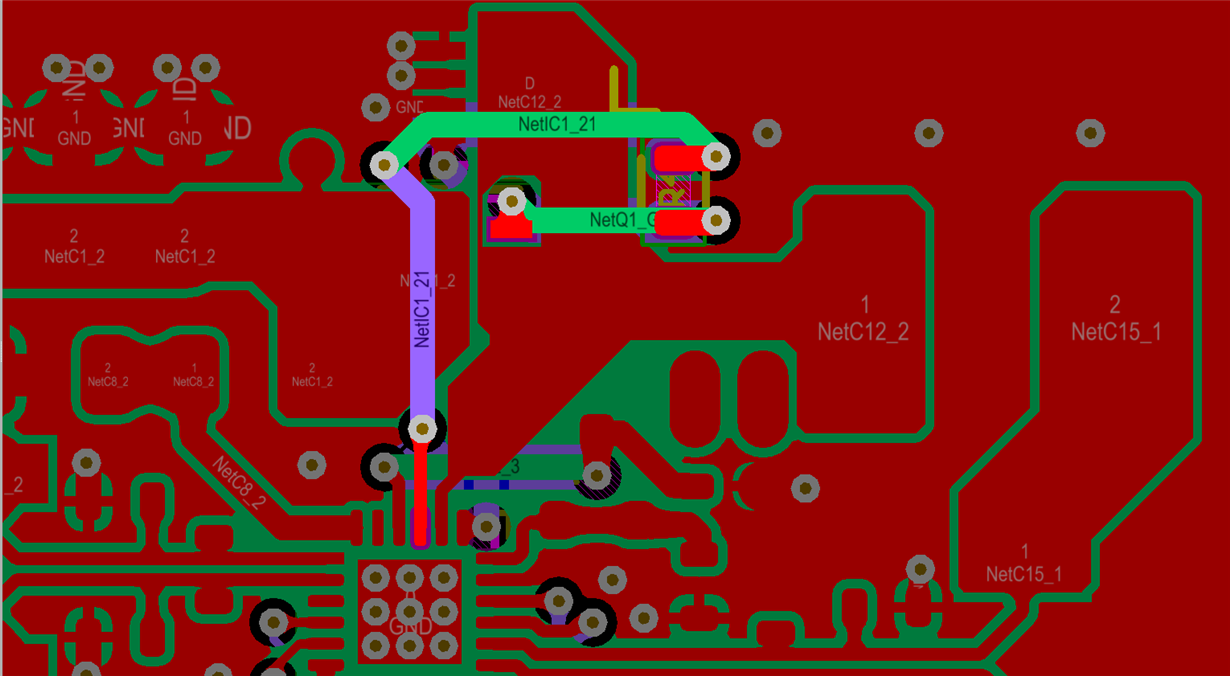Hello,
I'm using a BQ24610 in one designed PCB in order to charge a 18V Li-ion (5cells) 4Ah battery. Maximum charged, V = 21V.
The configuration is the following:
V_ISET1 = 0.07V (Ichg = 0.35A)
V_ISET2 = 0.3V (Iprechg = 0.3A)
V_ACSET = 0.07V (Iadp = 0.35A)
Then, the charging current is 0.35A more or less. My input voltage is 24V, the power dissipation and temperature calculation is the following:
Pd = (Vin - Vout) * I = (24V - 21V) * 0.35A = 1.05W
The equation assumed to be valid for calculating juntion temperature from R0jA is:
Tj = Ta + (RoJA * Pd) -> Tj = Ta + 43 ºC/W * 1.05W -> Tj = Ta + 45.15 ºC
As, Tj is 125 ºC (recommended) or 155ºC (maximum). Then the Ta could be:
Ta = 125ºC-45.15ºC = 79.85 ºC. This is the maximum Ta that can support the system.
I dont' know why but the IC (bq24610) temperature is about 75 ºC. And, this is the worst part, the high side mosfet achieves the 150 ºC !!!!. I think that it has burned.
And the PH voltage, I cannot see the switching of the mosfets.
However, the BQ24610 detects correctly the battery (STAT1 = ON, STAT2 = OFF) but the IC is not charging (maybe due to the mosfet?).
In the output of the BQ24610 I can measure 21V more or less (when battery is not connected), this is ok no?
Where is my problem? Why am I getting these temperatures? Have I to reduce the charge current?
Why the high side mosfet achieves 150 ºC?
Thank you very much. Any help will be very appreciated because I don't know how to proceed.









